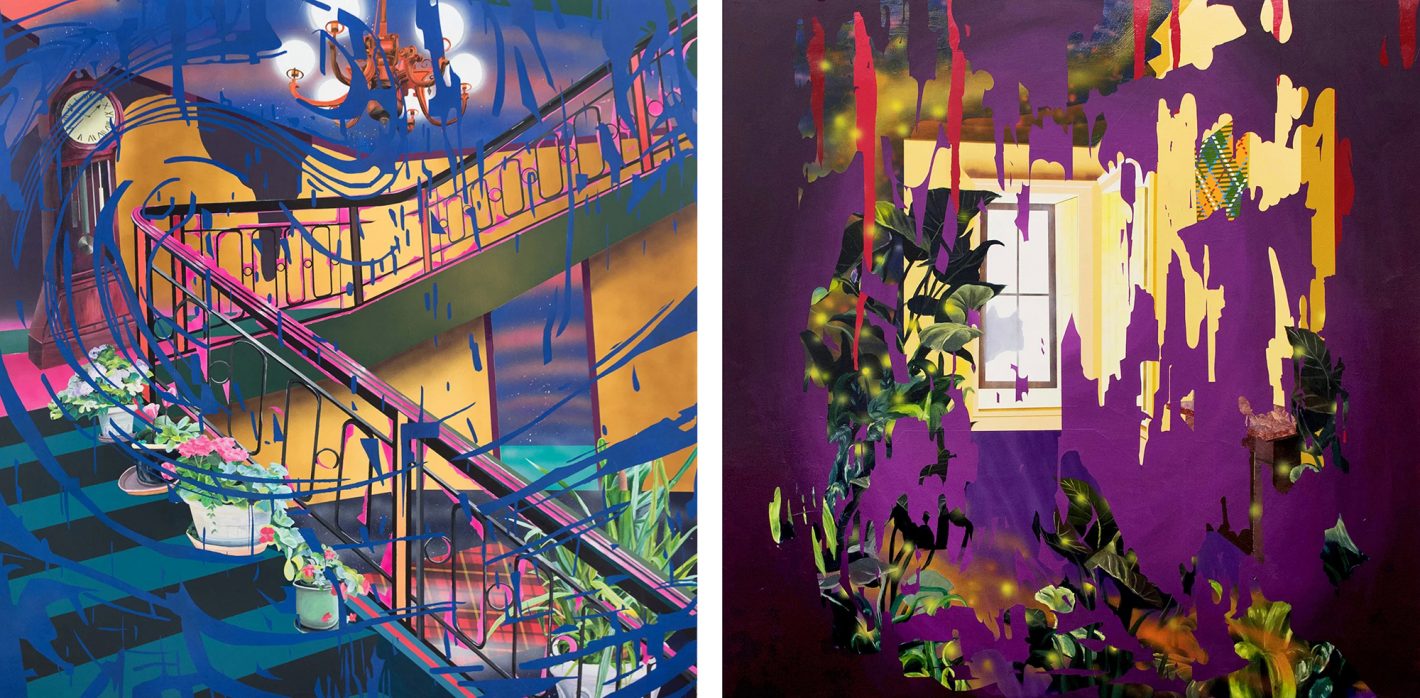 LEFT: It's Not Gonna Rain Tonight | Acrylic on Canvas | 72" x 72'' | 2018 // RIGHT: Quiet As a Mouse | Acrylic on Canvas | 72" x 72'' | 2017
LEFT: It's Not Gonna Rain Tonight | Acrylic on Canvas | 72" x 72'' | 2018 // RIGHT: Quiet As a Mouse | Acrylic on Canvas | 72" x 72'' | 2017
San Francisco-based artist Tom Colcord’s work blurs the lines between opposites. His “indoor landscapes” seamlessly combine the natural with the urban, dreams with reality and old techniques with new ones.
Originally from Indianapolis, Colcord got his BFA in Painting from the University of Indiana Bloomington. While studying abroad in Italy, Colcord was able to visit the Florence Biennale of Contemporary Art. After seeing what some of the best contemporary artists of today were doing, Colcord decided to move out west to San Francisco, where he earned an MFA at the prestigious San Francisco Art Institute.
Colcord loves to paint rooms, but it’s never just a room. One of his most recent paintings, It’s Not Gonna Rain Tonight, is a view of a half-remembered stairwell. Behind the swirling patterns in the foreground, the geometry isn’t quite right. The clock is leaning when it shouldn’t, colors bleed into one another and where the ceiling should be, there is only sky—or, perhaps, it really is the ceiling after all. These kinds of effects give many of Colcord’s paintings a haunted feeling. It’s the kind of haunting that comes from a memory warped by time, or from seeing a place that feels familiar that shouldn’t be.
Others, like No Tricks, are more straightforward representations of urban life, particularly the way nature interacts with it. In those, Colcord beautifully portrays the crowded gardens, high fences and unique verticality of the City by the Bay. Often, he combines these two subjects, creating dreamy indoor gardens that straddle the gap between nature and created space.
Colcord, who works as an educator at Gamblin Paint, will be giving a lecture on oil painting at the Natsoulas Gallery’s “Art of Painting in the 21st Century” conference March 9. Before that, though, check out or interview with the man himself.
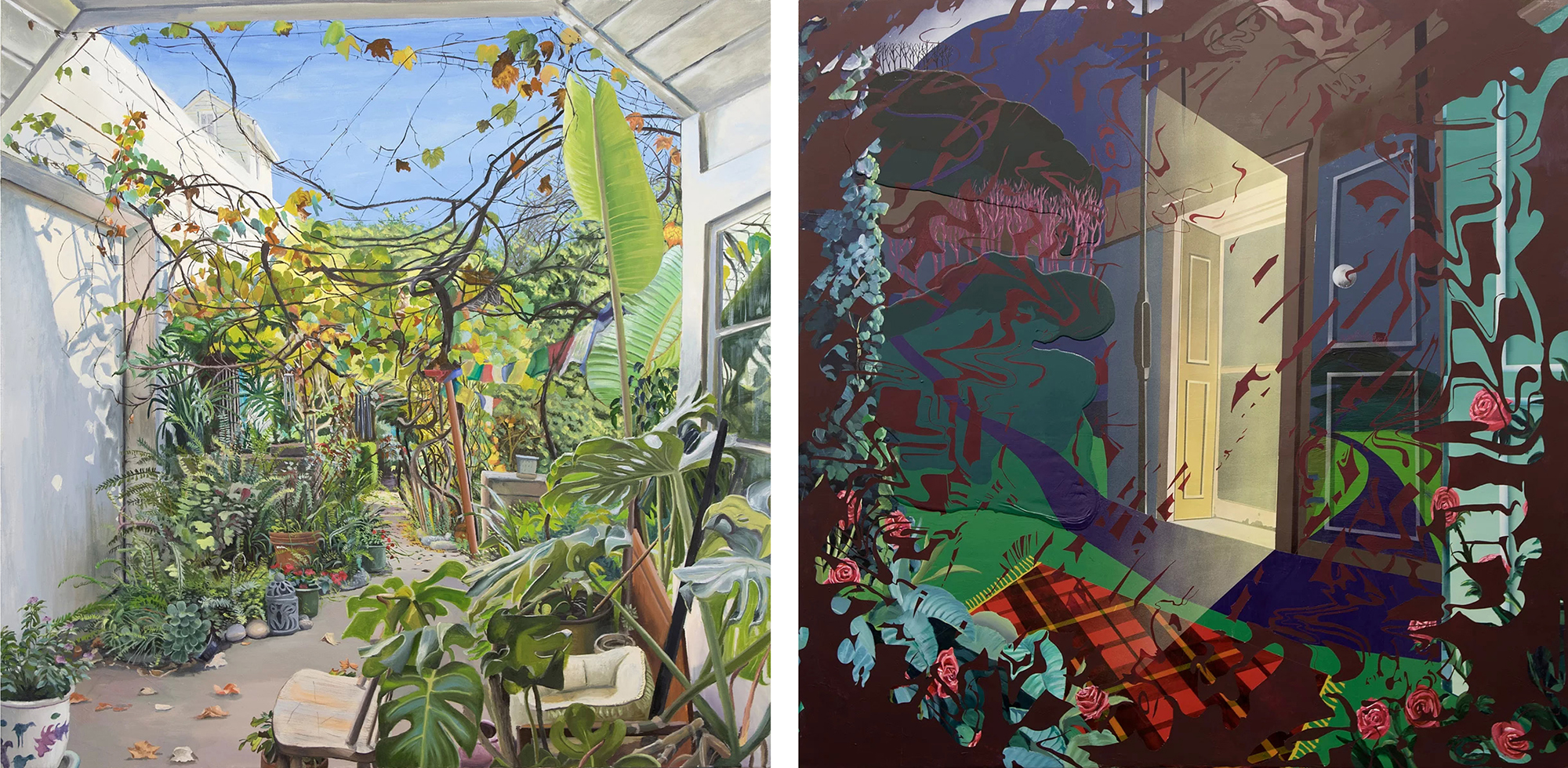
LEFT: No Tricks | Oil on Canvas over Panel | 48″ x 48” | 2018 // RIGHT: The Road Less Traveled | Acrylic on Canvas | 72″ x 72” | 2017
How did you first get into art?
I was always into it. I grew up drawing a lot and illustrating things. Before I could even read I was doodling. I liked to illustrate stories, but I couldn’t write and I would dictate to my mom what it was about. When I was a kid I had a really good art teacher at Ben Davis High School, Mr. Hurt. He has passed since, but he was very instrumental for me in learning and appreciating a lot of art mediums as well as learning a lot of history. He was a very generous guy.
How would you characterize your artistic style, and how has it evolved?
So when I was doing my BFA in Indiana, I was going to a school that was very “from life”—not realist, but a naturalistic style of painting. What you saw was what you painted. It was good because it gave me a foundation, but I always wanted to make something physical or a fantastical world. When I got [to SFIA] I saw how people were approaching painting here. It was a little bit more pop-y, and a little bit more cartoony. I was being more abstract, but I quickly figured out I wasn’t an abstract painter. The paintings I’m working on now are all oil-based, with the techniques from my BFA and the ideas from grad school. I’m back to being more about naturalism.
What’s your initial approach to your pieces?
For the big pieces I’m working on now, I start with a Photoshop collage, and I always have an idea of the color I want—like a certain idea of “magentas” or “blues.” Then I start importing things that I think I want to paint, then I’ll slave over it for six to eight months until it’s perfect. Then I have an image that meets all my requirements for a painting. I try to make [the final paintings] as close as I can to the collage, but it never happens. Finding out how to paint the things I design is part of the challenge.
What kind of things are you watching, reading or listening to that inspire your work?
I just saw an exhibition by an artist named Yun Lee, which really blew me away. She titled her show The End of the World in reference to a book we had both just read, coincidentally [Hard-Boiled Wonderland and the End of the World by Haruki Murakami]. I really want to paint the world that he writes about. Things like The Wind-Up Bird Chronicle, and his other works are my main interest, literature-wise. Painters I would want to be are Henri Rousseau, or Angela Dufresne. Any painter with a strong technique. Wayne Thiebaud was huge for me; I think about him a lot when I paint. And of course [my studiomate] Xiao Wang has been a huge influence on me.
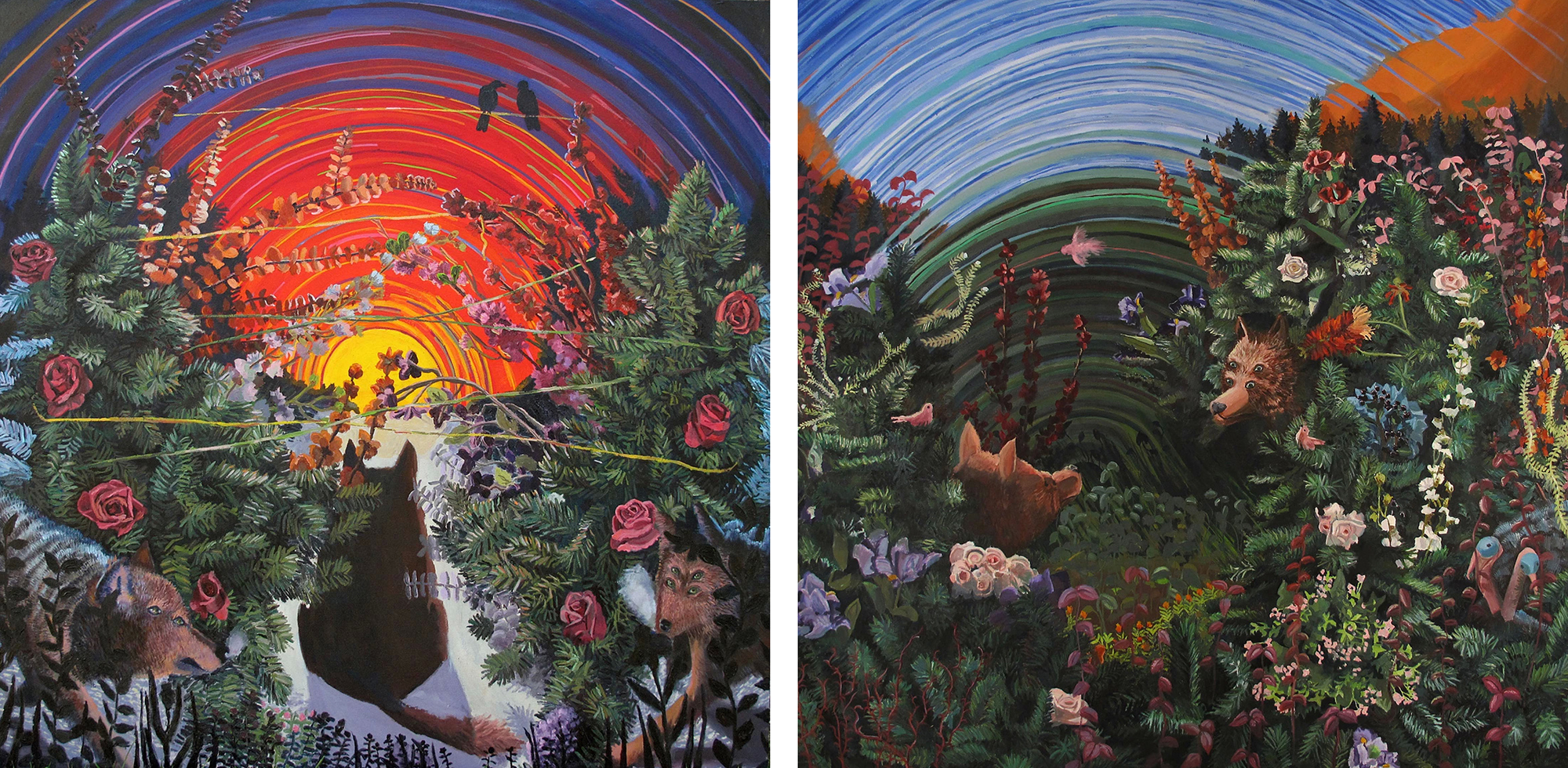
LEFT: Nothing That Has Happened So Far Has Been Anything We Could Control | Oil on Canvas | 46″ x 47” | 2014 // RIGHT: Blossom | Oil on Canvas | 68″ x 68″ |’ 2013
Your art features a lot of dreamlike interiors. What’s your relationship to space as an artist?
As someone who grew up in the Midwest, we had a lot of space, and suddenly my personal space shrunk coming to the city. So the larger or more significant paintings for me over the past couple years have been about the fluidity of memory and perception. The paintings I make are attempting to be this sort of warped idea of a real space, and how we perceive it. A lot of the patterning over the layers sort of references a change in the image. I always end up covering certain details, see if I can work to let you know there’s more than one element in a space, something I don’t see.
Most of these dreamlike spaces feature nature. Did your childhood in Indiana influence that?
I grew up in a wooded suburb and played outside a lot as a kid. I feel like we kind of are nature in a way. I like interiors and hard edges, but I started out as a landscape painter, so I’m always comfortable adding landscape elements. I like including the “exterior space” of the neighborhood.
Was there a big difference in coming to San Francisco?
The best way I can describe the culture I grew up in was like this calm, Midwestern suburb. Nature was part of the backdrop; I’m used to people hanging out in their front yards, like on their couch because their electricity is out. There’s always a lot of junk in my neighborhood. There was a lot of untamed wooden areas, and people didn’t attempt to weed or take care of it. It didn’t attempt to be aesthetic, but it had a homey atmosphere. Here, there’s an attempt to make the city more comfortable by using nature whether it’s through succulents, or potted plants or pets.
What’s your studio like?
The best I’ve ever had. Xiao, who also uses the studio, is a really fantastic painter. I found a warehouse space on Craigslist—basically an old house where a bunch of hippies live. They had a wine cellar that they wanted to rent. We had to spend a couple months just building a studio out of a space, but now I probably have one of the better studios in San Francisco. [The owners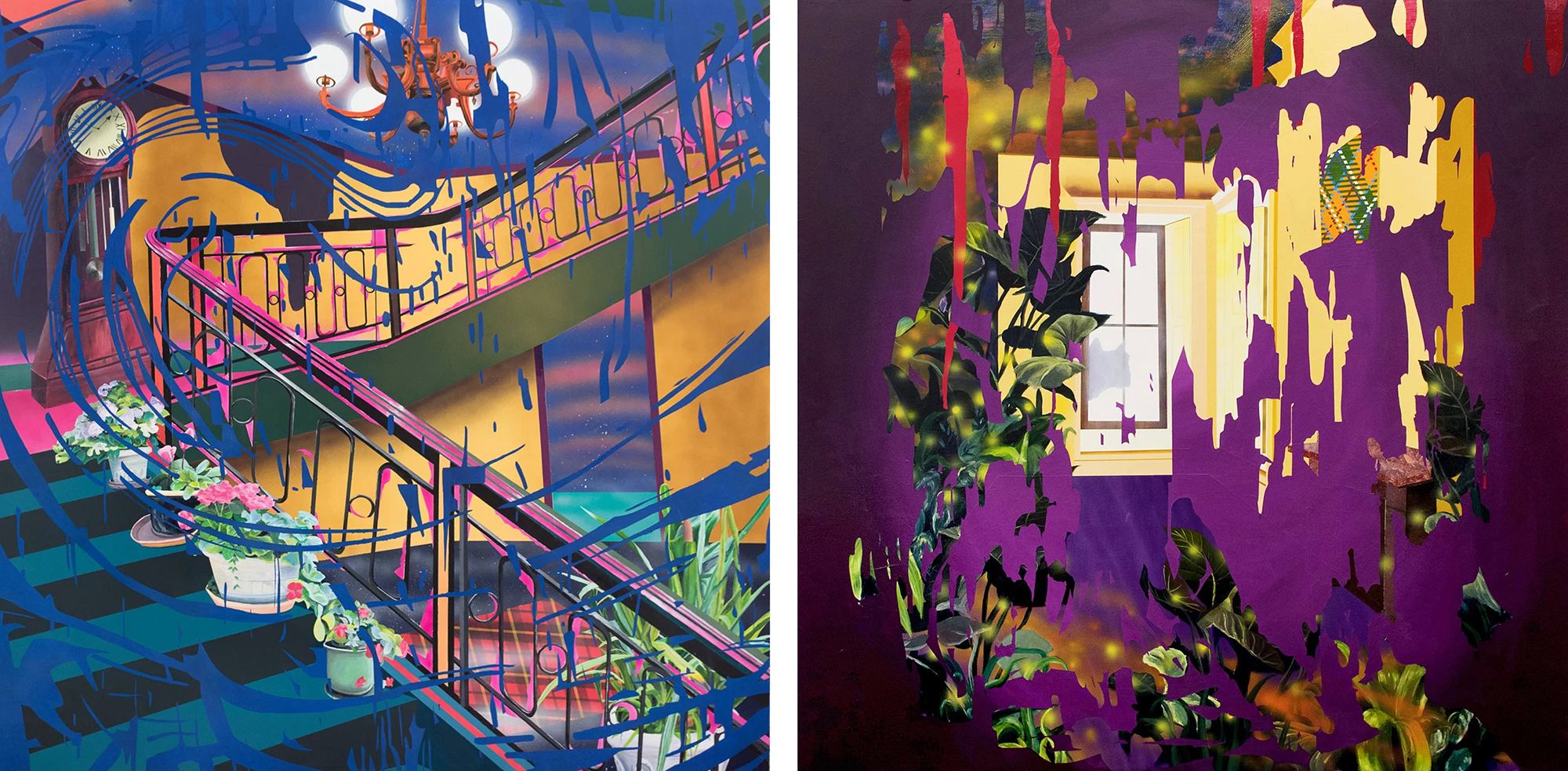 ] have a garden they’ve been taking care of for 20 years in their backyard. To go into the entrance of my studio, you have to go through it. There’s about 10 different cats that live there—it feels like an oasis.
] have a garden they’ve been taking care of for 20 years in their backyard. To go into the entrance of my studio, you have to go through it. There’s about 10 different cats that live there—it feels like an oasis.
Tom Colcord will be appearing at the Natsoulas Gallery (521 First St., Davis) March 9, 2019. Learn more at Natsoulas.com. Follow Tom Colcord on Instagram at @tcolcord.
**This piece first appeared in print on pages 20 – 21 of issue #286 (Feb. 27 – March 13, 2019)**

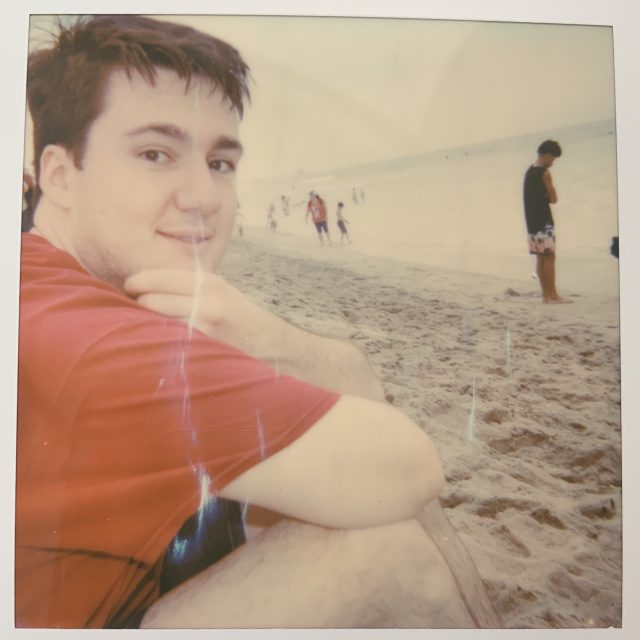
Comments